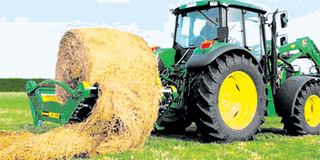Towards industralisation, innovative methods are needed in agriculture

Shangwe, a 42 year-old Tanzanian mother of two, sells her vegetables on a door to doors basis. Once she is tired, she sets a wooden wagon at the sideways of a grimy way of Rufungira street in Kinondoni Dar Es Salaam. From noon to sunset, she sits there everyday to make enough cash to feed her kids. In spite of a moderately steady flow of customers, Shangwe’s revenue is both scanty and unsure. As a phrase for “Vyuma vimekaza” continues to prevail, even the fresh vegetable prices have skyrocketed. Enfolded by the contractionary monetary chapter, every person in the supply chain, from the farmers to the last consumers are fighting to do more with less.
In most areas engaging in farming in the country, most of the produced crops don’t make it off the farms because of the poor farming methods.
During the transporting of the produce, more is damaged ending up being thrown away and sometimes sold at throw-away prices just to recover some cents. Poor infrastructures in the rural areas where agriculture take the forefront, bounds the time for Shangwe to vend her veggies and turn a diffident profit.
An extravagant food loss and delay in the supply chain, hastens consumers to shift to food with less nutrition. Uneconomical and lavish techniques for irrigation is also among the challenges facing the agriculture systems in most areas. COSTECH Research, Priorities for Tanzania 2015-2025 writes that “It is estimated that over 75 per cent of the losses occur after crops have been harvested. This is mainly due to poor handling practices and limited post-harvest technologies.” Nevertheless, these fatalities during the supply chain from the farmer to the final user can be evaded.
“Agriculture is the backbone of the national economy accounting for around 27.6 per cent of the GDP. The sector employs approximately 70% of the population, but it features very slow growth rates.” says the COSTECH research report. For a Tanzania that is moving to an industrialization phase, it needs to put into consideration of the new groundbreaking and innovative methods.
Methods that not only focus on increasing the quality of both food and cash crops, but also methods to renovate the country’s wasteful agriculture system that accommodates for the needs of the whole population and industries.
The Global Goals agenda lectured by the United Nations recommends meeting these obstacles by shifting the food and agriculture scheme onto a sustainable development lane.




